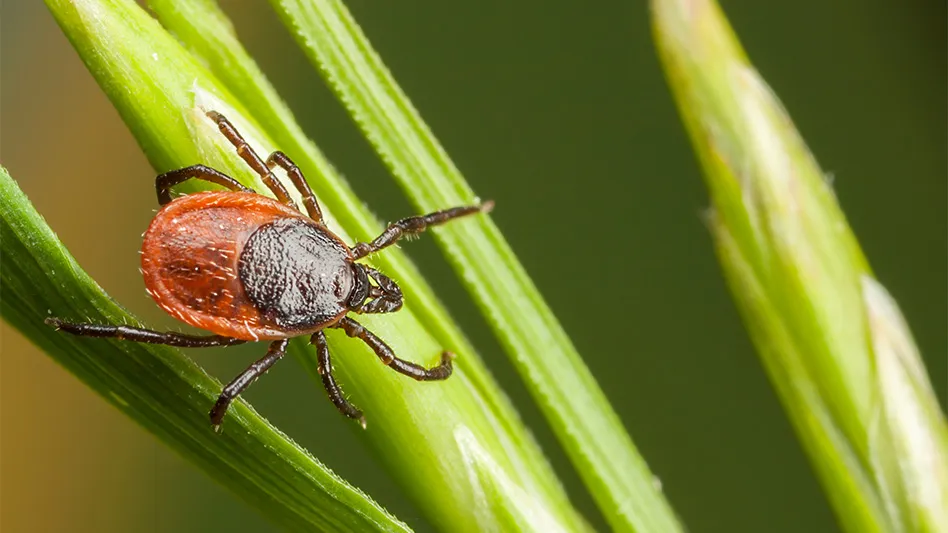Q:We have been wondering if there is anything we can do to help our customers in reducing the chance they will develop allergies to cockroaches in their homes. Every now and then this topic seems to come up in the news, and we have had several customers ask if killing cockroaches is all that is necessary to eliminate the problem of cockroach allergy.
What steps in addition to controlling the cockroaches can we take or should we recommend to our customers to reduce the potential for cockroach allergy to occur in their families? (D.N.)
A: The issue of cockroaches and allergy has been receiving attention for the last 10 years or so. More recently, very specific incriminating evidence has pointed to the cockroach, and more specifically the German cockroach, as being one, if not the main source, of allergens responsible for a large number of cases of asthma in children.
It has been said that if cockroaches are present in a dwelling, then the allergens which precipitate an allergic reaction are also present. To go a step further, it is, in fact, possible to have no live cockroaches present in a building and still have cockroach allergens present that are capable of causing allergic disease. This is due to the fact that the specific proteins responsible for cockroach allergy are present in the cockroach body and fecal materials whether the cockroaches are dead or alive. As a result, the accumulation of large quantities of fecal material, cast skins (exuviae), dead cockroaches, cockroach body parts, or even old egg cases can all serve as sources of cockroach allergens.
Therefore, while the elimination of cockroaches from a habitat is definitely important in controlling cockroach allergy, you must also eliminate these other sources of allergens if you are to improve the environment.
Basically, we are talking about sanitation, and in this case, sanitation within the micro-habitats in which cockroaches live and thrive. Unfortunately, many of these areas are not particularly accessible and may require extreme efforts to reach.
For example, I have removed portions of walls in both pier-and-beam foundation and slab houses and have found large amounts of cockroach fecal material and dead cockroaches piling up on the bottom plate of the wall void. I remember one case where there was at least 6 inches of solid fecal material in the bottom of numerous wall voids. This finding is not uncommon in brick buildings. In one hospital I worked in, enormous numbers of smokybrown cockroaches were gaining access to the ground floor patient rooms through weep holes in the exterior brick veneer. The wall voids were full of fecal material and dead cockroaches.
Potentially every crack and crevice that cockroaches have used as a harborage will contain allergens in the form of fecal material. It may not be feasible to attempt removal of this source of allergens. In fact, further investigation may show that injection of, or treating with, some form of sealant may be easier and more practical.
I suspect, however, that many residents have sources of cockroach allergens that can be fairly easily removed with something as simple as a vacuum cleaner, provided the device has a sufficient filtration system to trap even the smallest of particles so they are not merely redistributed within the dwelling.
In some cases, attempts to perform cockroach control and even limited allergen removal may result in dislodging the allergens and possibly creating an even more severe problem than would have resulted by leaving the materials alone.
Therefore, if you are going to attempt to clean up cockroach allergens, it has to be done in an appropriate and effective manner, so that you don’t make the problem worse. Consideration should be given to this potential problem, particularly if there are already people with allergies living within the house in question.
For starters, I believe you are off in the right direction by implementing a cockroach management program that stresses first monitoring the population to determine where the largest concentrations of cockroaches are within the dwelling. This distribution can be used as a target map for allergen remediation in the future. Once you know where the cockroaches are, then I believe the use of baits as the primary cockroach control tool is most appropriate.
Some pest control companies may want to consider turning over the cleaning aspects to organizations which are more familiar with the techniques and have the equipment necessary to do the job correctly.
On the other hand, if you wish to undertake the potential risks inherent in this type of work, I would suggest you prepare by reading everything you can find on cockroach allergy and its remediation. Then contact someone who has had experience doing this type of work and see if you can’t arrange for them to train you to do this properly.
Allergen removal may be an area which, in some cases, might be better off handled in a manner similar to termite damage. In other words, you will be responsible for the control of the pest, but the job of allergen removal is left to those companies that have specialized in this area.
Jeffrey Tucker is president of Entomology Associates, Houston. Questions can be sent to Q&A, c/o Entomology Associates, P.O. Box 70375, Houston, TX 77270, or faxed to 713/681-9069.

Explore the June 1997 Issue
Check out more from this issue and find you next story to read.
Latest from Pest Control Technology
- Ground Control
- Scientists, PMPs Collaborating to Map Termite Distribution in Southern U.S.
- Viking Pest Control Organizes a Charity Bike Build for Local Families
- Gaining Control of Structure-Infesting Carpenter Ants
- Big Blue Bug’s Brian Goldman Receives Rhode Island Small Business Person of the Year Award
- UF Researchers Examine How Much Bait it Takes to Eliminate a Subterranean Termite Colony
- Women in Pest Control Group Continues to Grow, Provide Opportunities in the Industry
- NPMA Announces Results of 2024-2025 Board of Directors Election





